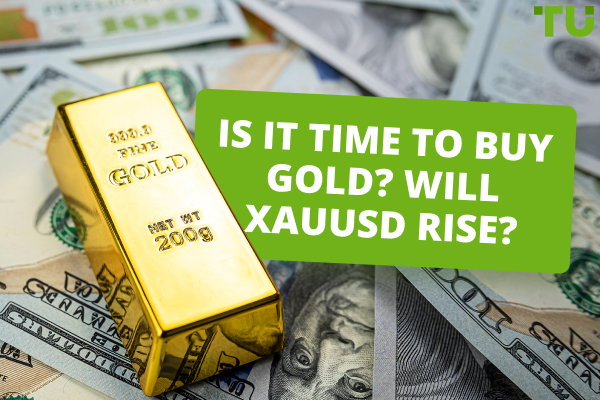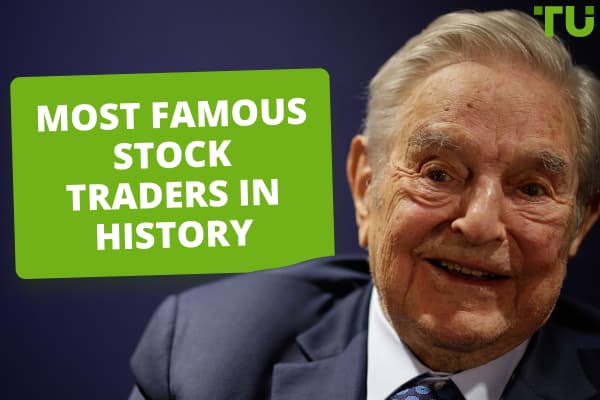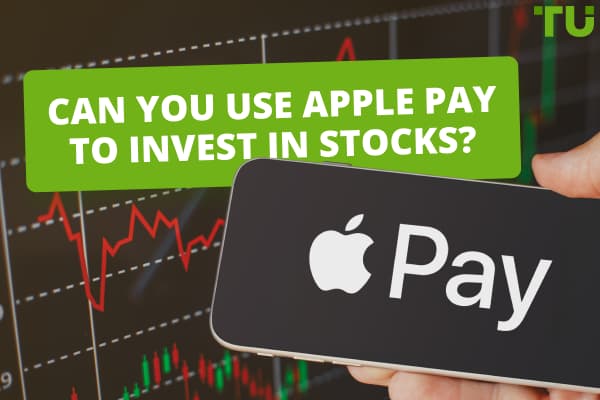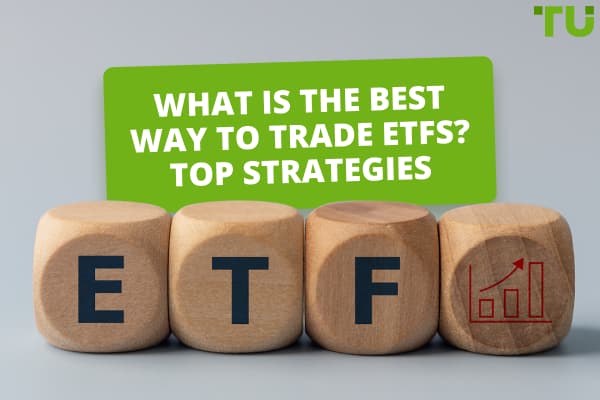Best Low-Cost ETFs To Buy Before The Market Turbulence
Top 9 low-cost ETFs to invest in are:
-
Vanguard Dividend Appreciation ETF (VIG) – Stable growth and low expense ratio
-
SoFi Select 500 ETF (SFY) – Affordable and unique index tracking
-
Gabelli Automation ETF (GAST) – Exposure to automation at exceptionally low cost.
-
SPDR Portfolio Developed World ex-US ETF (SPDW) – Cost-efficient global diversification.
-
Fidelity MSCI Communication Services Index ETF (FCOM) – Focus on the digital economy with low expense ratio.
-
AltShares Event-Driven ETF (EVNT) – Unique strategy, potential for diverse returns.
-
ETFMG Prime Junior Silver Miners ETF (SILJ) – Access to silver mining, uncorrelated asset class.
-
iShares Core S&P Total US Stock Market ETF (ITOT) – Broad U.S. market exposure, low expense ratio.
-
BNY Mellon Core Bond ETF (BKAG) – Stability with comprehensive U.S. bond market coverage.
In this insightful article, TU experts delve into the domain of low-cost Exchange-Traded Funds (ETFs), shedding light on key considerations for traders. The focus is on understanding the concept of low-cost ETFs, exploring top-performing cheap ETF options in the market, and evaluating their unique attributes. The experts discuss the criteria for selecting low-cost ETFs, emphasizing factors like expense ratios, administrative expenses, commissions, volume, holdings, performance, and trading prices. Additionally, the article provides valuable insights into the timing of ETF investments and concludes with a strategic perspective on how low-cost ETFs can align with individual financial goals.
Start Zero Fee ETF trading with eToro-
What are the key factors to consider when selecting low-cost ETFs?
When choosing low-cost ETFs, focus on factors such as expense ratios, administrative expenses, commissions, trading volume, holdings diversification, historical performance, and trading prices.
-
Why are low-cost ETFs considered advantageous for investors?
Low-cost ETFs are preferred due to their ability to minimize management fees (expense ratios), allowing investors to retain a larger portion of their returns over the long term
-
How can investors assess the performance of low-cost ETFs in the market?
Assess the historical returns of ETFs over different time periods, considering past performance as an indicator, though not a guarantee, of potential success in various market conditions.
-
Is now a good time to invest in low-cost ETFs, considering market conditions?
Market conditions play a crucial role; while lower prices in a downturn may offer buying opportunities, thorough research on specific ETFs and alignment with individual financial goals is essential for well-informed decisions.
What are low-cost ETFs?
When people talk about "cheap ETFs" or "low-cost ETFs," they're referring to how much it costs to manage these investment funds. The cost is usually expressed as a percentage, called the expense ratio, which represents the annual cost of running the fund compared to the total amount of money it holds.
So, a "cheap" or "low-cost" ETF is one where this percentage is low. A lower expense ratio is good for investors because it means less of their money is used to cover the fund's operating expenses so eventually, they get to keep more of their investment returns.
Investors often prefer low-cost ETFs because, over time, the lower expenses can add up to more money in their pockets. It's important to consider other things too, like how the fund invests, how well it tracks its benchmark, and how easy it is to buy and sell its shares.
Top low-cost ETFs to consider
| Stock Name | Stock Ticker | Net Assets | NAV | Yield | YTD Daily Total Return | Expense Ratio |
|---|---|---|---|---|---|---|
Vanguard Dividend Appreciation ETF |
VIG |
77.88B |
162.9 |
2.06% |
8.88% |
0.08% |
SoFi Select 500 ETF |
SFY |
496.65M |
16.11 |
1.55% |
22.28% |
0.00% |
Gabelli Automation ETF |
GAST |
4.18M |
22.84 |
0.74% |
9.51% |
0.00% |
SPDR Portfolio Developed World ex-US ETF |
SPDW |
15.53B |
32.31 |
3.12% |
10.61% |
0.03% |
Fidelity MSCI Communication Services Index ETF |
FCOM |
772.04M |
42.66 |
0.83% |
38.21% |
0.08% |
AltShares Event-Driven ETF |
EVNT |
2.94M |
9.95 |
2.48% |
8.59% |
1.29% |
ETFMG Prime Junior Silver Miners ETF |
SILJ |
584.99M |
8.99 |
0.07% |
-14.41% |
0.69% |
iShares Core S&P Total US Stock Market ETF |
ITOT |
42.52B |
99.3 |
1.62% |
18.58% |
0.03% |
BNY Mellon Core Bond ETF |
BKAG |
540.91M |
40.8 |
3.48% |
1.06% |
0.00% |
The Vanguard Dividend Appreciation ETF (VIG)
The Vanguard Dividend Appreciation ETF (VIG) focuses on high-quality dividend-growth stocks, specifically those with a solid financial standing and a history of increasing dividends for at least 10 consecutive years. This investment strategy is designed to provide stability and resilience, especially in times of economic uncertainty.
The latest financial report for the third quarter of 2023 reveals promising returns for investors in VIG. With a net asset value (NAV) return of 3.90% and a market price return of 3.94% over the quarter, VIG demonstrates consistent growth. The total return of 17.36% year-to-date emphasizes the ETF's strong performance.
As a low-cost ETF, investors benefit from its competitive expense ratio of 0.08%, allowing them to retain a larger share of their returns. This aligns with the goals of low-cost investing, where minimizing expenses contributes significantly to long-term gains. The top 10 holdings of this ETF as per latest available information are listed below
| Stock Ticker | Name | % Weight |
|---|---|---|
MSFT |
Microsoft Corporation |
5.30% |
AAPL |
Apple Inc. |
4.40% |
UNH |
UnitedHealth Group Incorporated |
3.64% |
XOM |
Exxon Mobil Corporation |
3.11% |
JPM |
JPMorgan Chase & Co. |
2.97% |
V |
Visa Inc. |
2.66% |
JNJ |
JNJ Johnson & Johnson |
2.62% |
PG |
The Procter & Gamble Company |
2.61% |
AVGO |
Broadcom Inc. |
2.47% |
MA |
Mastercard Incorporated |
2.31% |
The SoFi Select 500 ETF (SFY)
The SoFi Select 500 ETF (SFY) emerges as an attractive investment with an expense ratio of 0.00% and no management fees. SFY allows investors to tap into a diversified portfolio of 500 large U.S. stocks practically for free. This cost advantage is significant, especially when compared to the average expense ratio of around 0.5% for large-cap growth ETFs.
SFY stands out not only for its affordability but also for its unique approach to index tracking. Unlike traditional market-cap-weighted ETFs, SFY follows the Solactive SoFi US 500 Growth Index, incorporating three fundamental metrics—sales growth, earnings per share growth, and forward-looking EPS growth estimates.
The fund's low gross expense ratio of 0.19% further contributes to cost-effectiveness, ensuring more of investors' money is actively invested in the market. SFY's diversified portfolio spans various sectors, with a significant allocation to information technology, consumer discretionary, and financials, offering a balanced risk exposure and growth potential across different segments of the economy.
SFY's strong track record of performance, consistently outperforming its benchmark index over various time periods, adds another layer of appeal. The Morningstar Medalist Rating of Silver as of September 30, 2023, reaffirms SFY's position as a cost-effective and well-performing ETF, making it a compelling choice for investors looking to maximize returns while minimizing expenses. The top 10 holdings as per latest available data of this ETF are listed below.
| Stock Ticker | Name | % Weight |
|---|---|---|
AMZN |
Amazon.com, Inc. |
6.84% |
MSFT |
Microsoft Corporation |
5.10% |
AAPL |
Apple Inc. |
5.09% |
TSLA |
Tesla, Inc. |
3.60% |
NVDA |
NVIDIA Corporation |
2.13% |
XOM |
Exxon Mobil Corporation |
1.76% |
GOOG |
Alphabet Inc. |
1.49% |
GOOGL |
Alphabet Inc. |
1.47% |
CRM |
Salesforce, Inc. |
1.36% |
CVX |
Chevron Corporation |
1.24% |
The Gabelli Automation ETF (GAST)
The Gabelli Automation ETF (GAST) emerges as an intriguing investment option, particularly for those seeking exposure to the dynamic field of automation technology at an exceptionally low cost. With a net expense ratio of 0.0% and a Morningstar Medalist Rating of Silver, GAST offers investors an actively managed thematic ETF focused on companies involved in automation technology.
GAST's expense advantage is remarkable, with a gross expense ratio of 0.9%, positioning it as a cost-effective choice within the lowest fee quintile among its peers. This means that investors can participate in the potential growth of automation technology without incurring significant management fees.
As per latest information, GAST maintains a diversified portfolio across various sectors, with substantial allocations in information technology, consumer cyclical, and financial services. This diversification allows investors to benefit from the growth potential of automation technology while spreading risk across different industries. The top 10 holdings as per latest available data of this ETF are listed below.
| Stock Ticker | Name | % Weight |
|---|---|---|
N/A |
U.S. Dollar |
22.46% |
ROK |
Rockwell Automation, Inc. |
5.39% |
EMR |
EMR Emerson Electric Co. |
4.25% |
AME |
AMETEK, Inc. |
4.15% |
LNT |
Allient Inc. |
3.64% |
CHKP |
Check Point Software Technologies Ltd. |
2.95% |
MATW |
Matthews International Corporation Class A |
2.79% |
ICE |
Intercontinental Exchange, Inc. |
2.72% |
REZI |
Resideo Technologies, Inc. |
2.63% |
KE |
Kimball Electronics, Inc. |
2.61% |
The SPDR Portfolio Developed World ex-US ETF (SPDW)
The SPDR Portfolio Developed World ex-US ETF (SPDW) stands out as an attractive investment for those seeking a low-cost option to diversify their portfolio with international equities. With a gross expense ratio of just 0.03%, significantly lower than the average for developed market ETFs, SPDW exemplifies the principles of a low-cost ETF. This means that investors can maximize their exposure to the global developed market while minimizing the impact of fund management fees on their returns.
Beyond its cost efficiency, SPDW maintains a well-diversified portfolio with key allocations in financials (19.20%), industrials (14.60%), and consumer discretionary (13.70%). This diversification minimizes risk exposure and positions investors to benefit from the growth potential across various sectors of the global economy.
The ETF's historical performance is impressive, with an annualized return of 11.17% over the past year and 8.92% year-to-date as per latest available data, consistently outperforming its benchmark index.
SPDW's strategic focus on developed international equities outside the United States serves as a risk-mitigation strategy against country-specific challenges. The top 9 holdings as per latest available data of this ETF are listed below.
| Stock Ticker | Name | % Weight |
|---|---|---|
NOVO-B |
Novo Nordisk A/S Class B |
1.53% |
NESN |
Nestle SA |
1.42% |
SMSN |
Samsung Electronics Co Ltd DR |
1.25% |
ASML |
ASML Holding NV |
1.18% |
SHEL |
Shell PLC |
1.05% |
TM |
Toyota Motor Corp |
1.04% |
NOVN |
Novartis AG Registered Shares |
0.94% |
AZN |
AstraZeneca PLC |
0.94% |
MC |
LVMH Moet Hennessy Louis Vuitton SE |
0.91% |
Fidelity MSCI Communication Services Index ETF (FCOM)
Fidelity's commitment to providing low-cost ETF options is evident, particularly with its sector ETFs, which are recognized as the most economical in the market. Among them, the Fidelity MSCI Communication Services Index ETF (FCOM) stands out as a compelling investment for several reasons.
Having a Morningstar Medalist Rating of Silver, FCOM maintains a notable cost advantage over its peers, positioned within the cheapest fee quintile. This cost efficiency is a key factor, allowing investors to maximize their exposure to the communication services sector
The Fidelity MSCI Communication Services Index ETF (FCOM) offers a net expense ratio of 0.08%, notably lower than the average expense ratio of communication services ETFs, which typically floats around 0.5%.
FCOM's diversified portfolio, with a significant allocation of 98.70% to communication services, offers investors a strategic approach to risk reduction.
The ETF's impressive track record of performance further solidifies its appeal. With an annualized return of 23.04% over the past year and 20.55% year-to-date, FCOM consistently outperforms its benchmark index across various time periods.
FCOM's holdings include major players such as Meta Platforms, Alphabet, Netflix, and Walt Disney, reflecting the ETF's exposure to key companies driving the digital economy. The top 10 holdings as per latest available data of this ETF are listed below.
| Stock Ticker | Name | % Weight |
|---|---|---|
META |
Meta Platforms, Inc. |
21.46% |
GOOGL |
Alphabet Inc. (Class A) |
12.64% |
GOOG |
Alphabet Inc. (Class C) |
10.45% |
VZ |
Verizon Communications Inc. |
4.91% |
NFLX |
Netflix, Inc. |
4.77% |
DIS |
The Walt Disney Company |
4.46% |
CMCSA |
Comcast Corporation |
4.19%% |
T |
AT&T Inc. |
3.80% |
TMUS |
T-Mobile US, Inc. |
3.17% |
|
CHTR |
Charter Communications, Inc. |
1.74% |
AltShares Event-Driven ETF (EVNT)
The AltShares Event-Driven ETF (EVNT) offers investors a unique and alternative investment strategy to diversify their portfolio. Priced under $10, EVNT is a low-cost ETF that stands out for its active management approach, focusing on stocks and bonds affected by publicly announced or anticipated corporate events.
EVNT's investment strategy allows it to take both bullish and bearish positions, buying or shorting securities based on expected market reactions to specific events. This flexibility can be advantageous, providing potential returns regardless of market direction. The fund's current largest holding, Activision Blizzard, comprising 6.37% of the portfolio, highlights its dynamic approach, with near-term returns tied to regulatory decisions related to Microsoft's pending takeover.
While EVNT carries a relatively higher expense ratio of 1.29%, its potential benefits include low correlation with the S&P 500. This feature can make EVNT an attractive addition to a well-rounded portfolio, offering diversification and potentially reducing overall portfolio volatility. The top 10 holdings as per latest available data of this ETF are listed below.
| Stock Ticker | Name | % Weight |
|---|---|---|
ATVI |
Activision Blizzard Inc |
6.84% |
DEN |
Denbury Inc |
5.37% |
CIR |
Circor International Inc |
4.82% |
SYNH |
Syneos Health Inc |
4.70% |
HZNP |
Horizon Therapeutics PLC |
4.26% |
ARGO |
Argo Group International Holdings Ltd |
3.91% |
HCCI |
Heritage-Crystal Clean Inc |
3.58% |
CPRI |
Capri Holdings Ltd. |
3.52% |
VMW |
VMware Inc |
3.02% |
|
NATI |
National Instruments Corp |
2.96% |
The ETFMG Prime Junior Silver Miners ETF (SILJ)
The ETFMG Prime Junior Silver Miners ETF (SILJ) stands out as a distinctive investment opportunity, particularly for those seeking exposure to the silver mining exploration and production industry. Priced under $10 at $8.96, SILJ is a low-cost ETF offering direct access to small-cap companies in the silver mining sector, making it the first and only ETF of its kind.
Investing in SILJ provides a unique method of diversification, as the asset class is uncorrelated with most broad equity markets. SILJ's Morningstar Medalist Rating of Silver underscores its appeal, with the portfolio maintaining a significant cost advantage within the cheapest fee quintile among its peers.
Despite the challenging market conditions, SILJ's historical performance, reflects the sector's volatility. For those seeking an affordable entry point into the small-cap silver mining sector, the ETFMG Prime Junior Silver Miners ETF (SILJ) at its current price represents an intriguing opportunity to explore this unique and uncorrelated asset class.
SILJ's top holdings, as per the latest data, include key players in the silver mining including, Pan American Silver Corp (Ticker: PAAS CN), First Majestic Silver Corp (Ticker: AG), and MAG Silver Corp (Ticker: MAG CN). The top 10 holdings as per latest available data of this ETF are listed below.
| Stock Ticker | Name | % Weight |
|---|---|---|
PAAS |
Pan American Silver Corp |
13.03% |
FR |
First Majestic Silver Corp |
10.38% |
CS |
Capstone Copper Corp. |
6.61% |
MAG |
MAG Silver Corp |
6.49% |
HAM |
Harmony Gold Mining Co Ltd ADR |
5.98% |
HL |
Hecla Mining Company |
4.89% |
SSRM |
SSR Mining Inc. |
4.49% |
ELD |
Eldorado Gold Corporation |
3.87% |
SIL |
SilverCrest Metals Inc. |
3.84% |
|
BVN |
Compania de Minas Buenaventura S.A. |
3.68% |
The iShares Core S&P Total US Stock Market ETF (ITOT)
ITOT offers investors cost-effective and convenient access to the entire U.S. stock market through a single fund. This comprehensive exposure spans from small to large companies, making it a versatile option suitable for diverse investment strategies. The ETF's inclusion of both well-established and smaller companies allows investors to capture the full spectrum of the U.S. equity market.
The Morningstar Analyst Rating of Gold further underscores the ETF's quality and attractiveness within the investment landscape.
One of the key advantages of ITOT is its impressively low gross expense ratio of 0.03%. This figure significantly outperforms the average expense ratio for U.S. stock market ETFs, which typically hovers around 0.5%. The fund has a high yield of 9.41% as of 1st November.
As per latest available data, ITOT's net asset value (NAV) was $98.92, reflecting the fund's market value. The fund's holdings are well-diversified, with top positions in major companies such as Apple, Microsoft, Amazon, NVIDIA, and Alphabet. The top 10 holdings as per latest available data of this ETF are listed below.
| Stock Ticker | Name | % Weight |
|---|---|---|
AAPL |
Apple Inc |
6.23% |
MSFT |
Microsoft Corp |
5.98% |
AMZN |
Amazon.com Inc |
4.12% |
FB |
Facebook Inc A |
2.42% |
GOOGL |
Alphabet Inc A |
1.98% |
GOOG |
Alphabet Inc C |
1.94% |
JPM |
JPMorgan Chase & Co |
1.87% |
JNJ |
Johnson & Johnson |
1.77% |
PG |
Procter & Gamble Co |
1.68% |
|
V |
Visa Inc Class A |
1.67% |
BNY Mellon Core Bond ETF (BKAG)
The BNY Mellon Core Bond ETF stands out as an attractive investment vehicle, offering investors broad exposure to the overall U.S. bond market by tracking the Bloomberg US Aggregate Total Return Index.
This ETF encompasses a diverse range of fixed-income securities, including corporate debt, mortgage-backed securities, Treasuries, and other debt instruments with at least one year until maturity. Such inclusivity ensures comprehensive coverage of the U.S. bond market, allowing investors to benefit from the stability and income potential offered by bonds.
Notably, the BNY Mellon Core Bond ETF distinguishes itself by being a low-cost fund with no fees. The fund's inception in April 2020, along with its substantial net assets of $569,138,681 and a current yield of 4.06%, reflects its stability and potential for income generation. With a robust portfolio consisting of 3,442 holdings as per latest available data, the BNY Mellon Core Bond ETF offers investors a well-diversified approach to bond market exposure.
| Name | % Weight |
|---|---|
Dreyfus Institutional Pre |
2.48% |
|
United States Treasury Notes 4.125% |
0.56% |
|
United States Treasury Notes 1.875% |
0.54% |
|
United States Treasury Notes 1.5% |
0.53% |
|
United States Treasury Notes 2.75% |
0.53% |
|
United States Treasury Notes 3.5% |
0.50% |
|
United States Treasury Notes 0.625% |
0.47% |
|
United States Treasury Notes 0.75% |
0.43% |
|
United States Treasury Notes 1.375% |
0.43% |
|
United States Treasury Notes 1.25% |
0.42% |
Is it a good time to buy low-cost ETFs?
Investing in low-cost ETFs can be a smart strategy for investors seeking a cost-effective and diversified approach to long-term wealth building. The attraction of these funds lies in their ability to minimize management fees, making them particularly appealing to passive investors who prefer a hands-off approach.
Experts discuss the importance of cost-effectiveness for achieving sustained financial gains. Low expense ratios play a pivotal role in allowing investors to retain a larger portion of their returns. The prevailing philosophy suggests that prioritizing fee reduction over the long term holds more significance than chasing short-term outperformance.
Assessing market conditions is crucial when considering the timing of investing in low-cost ETFs. In a market downturn, prices, including those of ETFs, may be lower, potentially offering a favourable buying opportunity. However, it's imperative to conduct thorough research on specific ETFs to understand their underlying assets and historical performance.
Also diversification is a key benefit of ETFs, and low-cost options providing exposure to various sectors can effectively spread risk in a portfolio.
In conclusion, investing in low-cost ETFs can be strategically sound given appropriate market conditions and aligned investment objectives. Thorough research and consideration of various factors are vital for making well-informed decisions that match specific financial goals.
Criteria for selecting cheap ETFs
As per the experts, if you're looking to pick cheap ETFs (Exchange-Traded Funds), there are a few key criterias to consider. These factors help you assess the fund's cost-effectiveness and its potential to benefit your investment.
| Criteria | Description |
|---|---|
Expense Ratio |
The expense ratio is an annual fee representing the cost of running the ETF. Lower ratios are preferable as they indicate reduced operational costs, allowing you to retain more of your investment. |
|
Administrative Expenses |
Often referred to as expense ratios, these costs directly impact your profits. Opt for ETFs with lower administrative expenses to maximize your returns, as minimizing these costs increases your overall gains. |
|
Commissions |
Commissions are fees incurred with each transaction when buying or selling an ETF. Choose ETFs with lower commission fees to minimize expenses over time, helping you preserve more of your investment capital. |
|
Volume |
Volume reflects the number of shares traded within a specific time frame. Higher volume suggests an actively traded and popular ETF, which can be advantageous. A more actively traded ETF may have better liquidity and narrower bid-ask spreads. |
|
Holdings |
Evaluate the diversity of holdings within the ETF. A well-diversified ETF with a balanced mix of stocks provides stability to your investment. Ensure that the ETF holds a variety of assets to mitigate risks associated with individual securities. |
|
Performance |
Examine the historical returns of the ETF over a specified period. While past performance doesn't guarantee future results, it provides insights into how the fund has performed in different market conditions. |
|
Trading Prices |
Consider the current market prices at which the ETF is bought and sold. Align the trading prices with your investment goals to ensure they meet your desired outcomes. |
Pros and cons of investing in low-cost ETFs
Before investing in cheap ETFs it is essential to be aware of the pros and cons related to such investment. Experts have discussed pros and cons related to investing in low-cost ETFs in the below table.
👍 Pros
• Cost efficiency. Low expense ratios ensure a higher percentage of returns for investors.
• Long-term performance. Research indicates that low-cost funds tend to outperform higher-cost alternatives over the long term.
• Alignment of interests. Low costs often indicate fund managers aligning their goals with investors.
• Transparency. Many low-cost ETFs follow transparent indexing strategies, making it easier for investors to understand holdings.
👎 Cons
• Limited active management. Passively managed ETFs may provide limited adjustments in dynamic market conditions.
• Narrow investment focus. Some low-cost ETFs may have a narrow focus, leading to concentration risk.
• Liquidity concerns. ETFs with lower trading volumes may face liquidity challenges, impacting bid-ask spreads.
• Overemphasis on cost. Focusing solely on cost may lead to overlooking other critical factors.
Glossary for novice traders
-
1
Investor
An investor is an individual, who invests money in an asset with the expectation that its value would appreciate in the future. The asset can be anything, including a bond, debenture, mutual fund, equity, gold, silver, exchange-traded funds (ETFs), and real-estate property.
-
2
Index
Index in trading is the measure of the performance of a group of stocks, which can include the assets and securities in it.
-
3
Diversification
Diversification is an investment strategy that involves spreading investments across different asset classes, industries, and geographic regions to reduce overall risk.
-
4
Trading
Trading involves the act of buying and selling financial assets like stocks, currencies, or commodities with the intention of profiting from market price fluctuations. Traders employ various strategies, analysis techniques, and risk management practices to make informed decisions and optimize their chances of success in the financial markets.
-
5
Volatility
Volatility refers to the degree of variation or fluctuation in the price or value of a financial asset, such as stocks, bonds, or cryptocurrencies, over a period of time. Higher volatility indicates that an asset's price is experiencing more significant and rapid price swings, while lower volatility suggests relatively stable and gradual price movements.
Team that worked on the article
Parshwa is a content expert and finance professional possessing deep knowledge of stock and options trading, technical and fundamental analysis, and equity research. As a Chartered Accountant Finalist, Parshwa also has expertise in Forex, crypto trading, and personal taxation. His experience is showcased by a prolific body of over 100 articles on Forex, crypto, equity, and personal finance, alongside personalized advisory roles in tax consultation.
Dr. BJ Johnson is a PhD in English Language and an editor with over 15 years of experience. He earned his degree in English Language in the U.S and the UK. In 2020, Dr. Johnson joined the Traders Union team. Since then, he has created over 100 exclusive articles and edited over 300 articles of other authors.
Mirjan Hipolito is a journalist and news editor at Traders Union. She is an expert crypto writer with five years of experience in the financial markets. Her specialties are daily market news, price predictions, and Initial Coin Offerings (ICO).









